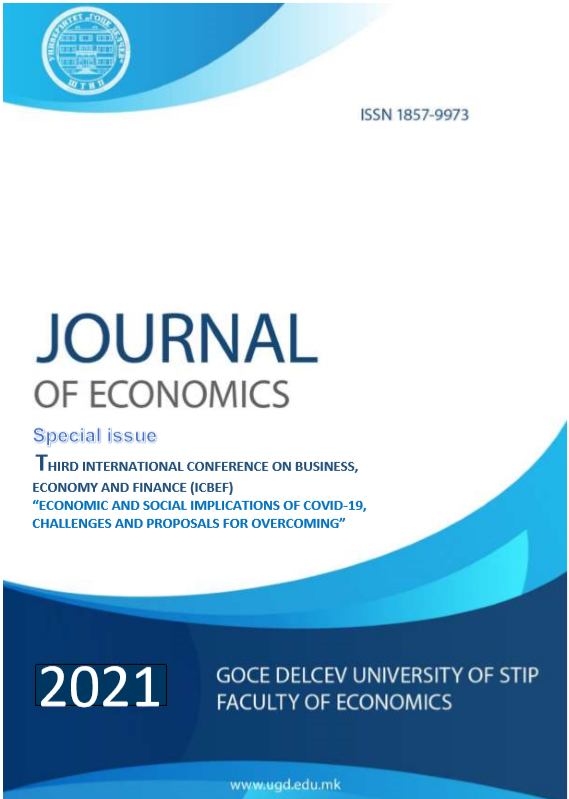Macroeconomic impacts of the Covid-19 crisis on selected CEE countries
DOI:
https://doi.org/10.46763/JOE2160231lKeywords:
Covid-19 crisis, CEE countries, macroeconomic indicatorsAbstract
The outbreak of pandemic COVID-19 across the globe with more than three million dead
people has completely disrupted the, social, economic and financial structures of the
world. The rapid spread of COVID-19 pandemic in early March 2020 interrupted the growth
momentum, which was present in most of the Eastern European countries. Many countries
have closed their borders, ordered businesses to close, instructed their populations to
self-quarantine, and closed schools. In addition, stock markets around the world have
fallen and tax revenue sources have collapsed. Because of the medical crisis,
governments across the globe implemented monetary, fiscal and balance of payments
measures to curb with the severe economic downturn. Today, one and a half year after the
first case was registered in China, even with high uncertainty about the path of the
pandemic, a way out of this health and economic crisis is increasingly visible.
In this paper, we prepare macroeconomic overview of the COVID – 19 impact on the
macroeconomic developments with comparative analysis of the Eastern European
countries. Unfortunately, many of these countries are among the worst performers with
very high number of deaths per million people. We found serious impact of COVID-19 to
the economies in this group of countries with higher magnitude than the global financial
crisis of 2007-2009. The impact is different, attacking both supply and demand side of the
economy and certain sectors has been more affected, especially micro, small, and medium
enterprises. We found that countries, which rely more on tourism sector, suffered more
than other countries.


